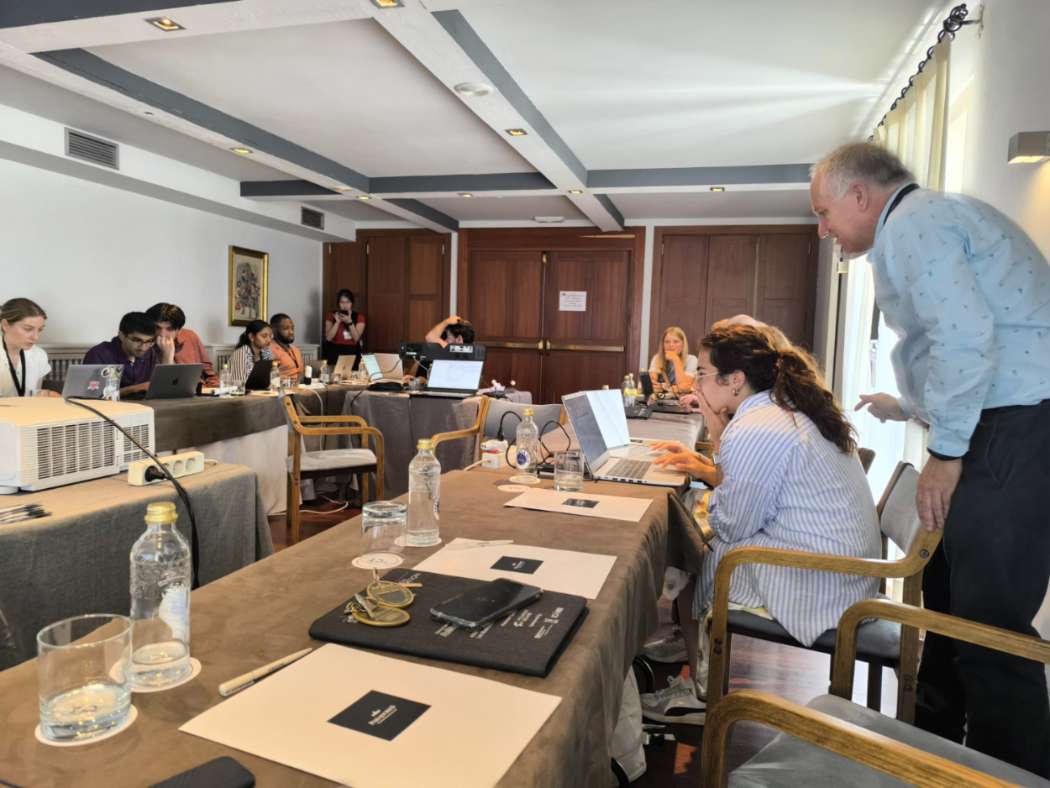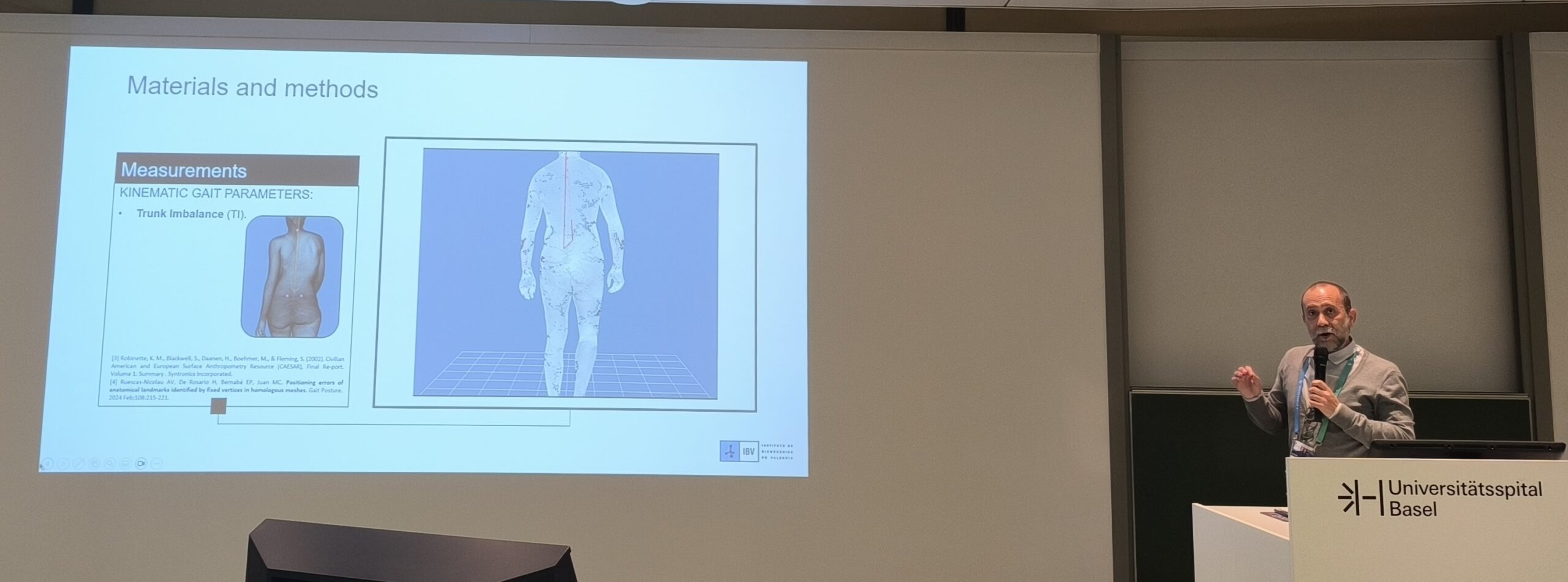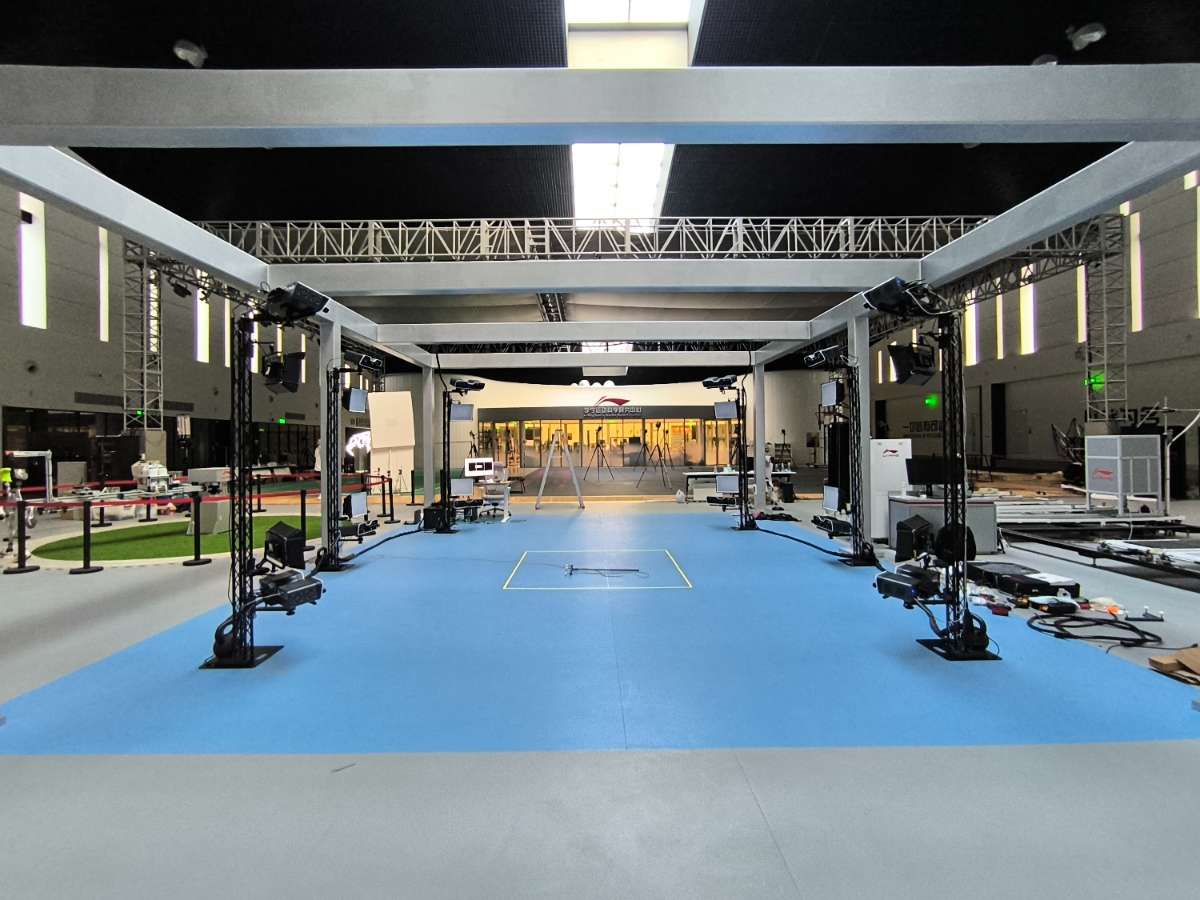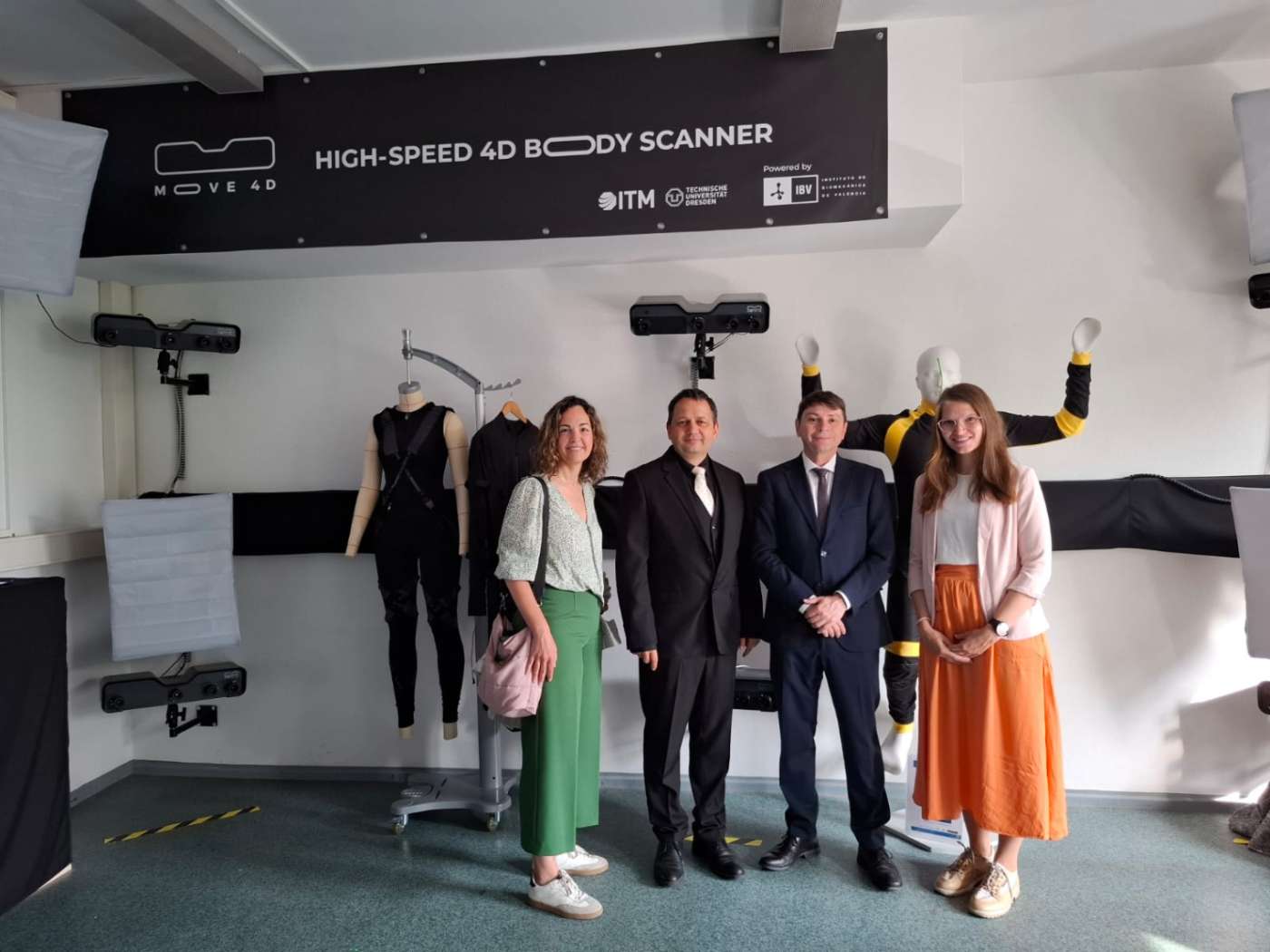The 12th Summer School of Neurorehabilitation: Innovation in sensorless motion analysis


The Summer School of Neurorehabilitation (SSNR) held its 12th edition from June 8–13, 2025, in Baiona, Spain, reinforcing its reputation as a leading international event in neurological rehabilitation.
A research team from the Instituto de Biomecánica de Valencia (IBV) returned once again to actively contribute to this key meeting point for innovation in neurorehabilitation. Their participation focused on the latest advances in sensorless motion analysis, offering hands-on insights and tools to support both clinical and research applications.
Throughout the article you will find all the details of our experience.
A global reference in neurorehabilitation
Organized by respected institutions—Shirley Ryan AbilityLab, Imperial College London, Center for Clinical Neuroscience Hospital Los Madroños, and Technaid S.L.—the event brought together professionals, researchers, and clinicians from across the globe to share knowledge, explore new technologies, and debate the future of neurorehabilitation.
The program embraced a multidisciplinary approach, covering everything from clinical and neurophysiological foundations to the practical application of emerging technologies. Highlights included neuroprosthetics, robotic interfaces, non-invasive brain stimulation, and strategies for precision and personalized rehabilitation.
Goals and vision of the event
The core mission of the SSNR is to deliver in-depth training in advanced procedures for the neurorehabilitation of motor dysfunction caused by stroke, spinal cord injury, and cerebral palsy. Each edition combines keynote lectures, practical workshops, and interactive discussions to help participants gain high-level expertise in assessment, intervention design, and the application of innovative tools.
A key strength of this initiative is its focus on translating scientific research into clinical practice. This goal—to bridge the gap between lab and clinic—shaped the content of the sessions, particularly the workshops.
Workshop WS6: Sensorless assessment of human motion
Among the event’s most notable sessions was Workshop WS6: Sensorless Assessment of Motor Function, organized by the Instituto de Biomecánica de Valencia (IBV). This workshop explored the emerging possibilities of motion capture and analysis without the need for wearable sensors or markers.
The workshop’s tagline—”Discover the future of motion analysis without sensors or markers”—perfectly captured its innovative spirit: making advanced measurement tools easier to access, less intrusive for patients, and adaptable to everyday clinical settings.

Context and rationale
Traditional motion capture relies on optical systems with reflective markers, high-speed cameras, and specialized laboratories. While effective, these setups have clear limitations:
- Time-consuming preparation: placing markers on the body requires time and expertise.
- Interference with natural movement: markers or wearable equipment can affect how people move.
- Cost and accessibility: many clinics and research labs cannot afford such systems.
To overcome these barriers, researchers have been developing markerless motion capture solutions based on computer vision, machine learning, and dynamic 3D reconstruction.
Three days of intensive learning
Workshop WS6 unfolded over three days, with each session building on the last to progressively deepen understanding and hands-on skills.
Day 1: Markerless photogrammetry
The first day focused on the fundamentals of markerless photogrammetry—a technique that uses standard cameras and reconstruction algorithms to generate 3D models of the human body in various postures. While this session wasn’t led directly by the IBV team, it covered key concepts that are also central to the capabilities of our markerless 4D motion capture system. This approach, more accessible than traditional motion labs, opens up new possibilities for routine, contactless clinical assessments.
Key topics included:
- Camera calibration and setup.
- Limitations of real-time 3D reconstruction.
- Techniques to improve model accuracy.
By the end of Day 1, participants understood how to capture body geometry economically and without contact.
Day 2: From dynamic scanning to biomechanical insight
Day 2 was the heart of the workshop: Dynamic body shape to biomechanical insight. Two of IBV’s most advanced solutions were introduced:
- MOVE4D: a system that captures not only static shapes but also full-body motion, generating sequences of consistent, textured 3D meshes frame by frame.
- Kinemov4D: tools that process these dynamic meshes to extract biomechanical variables, such as joint angles, center of mass trajectories, and segmental movement patterns.
Participants worked hands-on with Jupyter Notebooks, processing sample datasets, aligning data, and analyzing outputs. Topics included:
- Quality control in dynamic reconstruction.
- Comparisons with conventional gait analysis methods.
- Applications in neurological patient assessment.
Day 3: Functional evaluation and muscle activation
The third day focused on muscle activation estimation and pathological gait assessment. A particularly innovative topic was how subtle changes in body surface shape can indirectly indicate underlying muscle activity.
This approach has enormous potential to:
- Study muscle patterns without invasive electromyography.
- Assess compensation strategies in neurological conditions.
- Support more personalized rehabilitation programs.
Participants explored real case examples and discussed how these insights could transform clinical workflows.
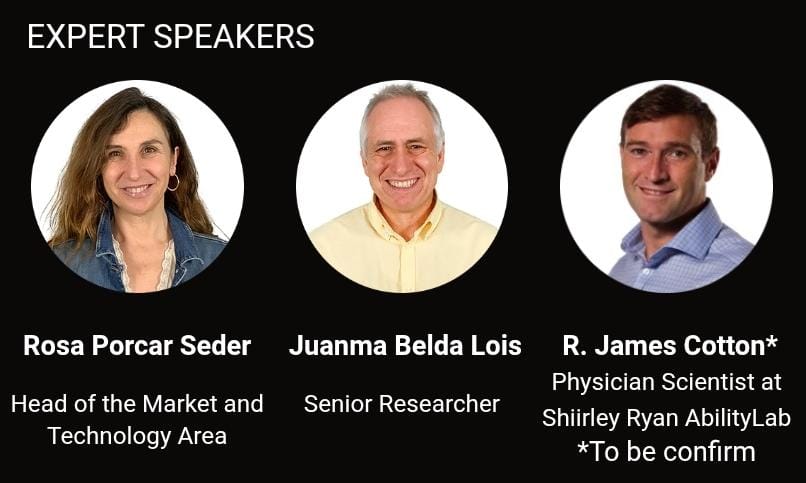
Skills and knowledge acquired
By the workshop’s conclusion, attendees walked away with valuable capabilities:
- Understanding the core principles of sensorless motion capture
- Capturing and processing data using low-cost and advanced systems alike.
- Generating dynamic meshes and extracting detailed biomechanical information.
- Interpreting muscle activation from body surface changes.
- Applying these techniques in clinical and research environments.
Why sensorless motion capture is a game changer
Interest in this workshop reflects a growing trend across clinical and scientific communities: finding tools that are more accessible, less invasive, and scalable.
The combination of markerless capture with dynamic body shape analysis offers unique advantages:
- Natural movement: no equipment restricts the way subjects walk or perform tasks.
- Efficiency: setup and processing times are significantly reduced.
- Scalability: hospitals and clinics can adopt these tools without massive investments.
- Compatibility: outputs integrate seamlessly with biomechanical and simulation software.
MOVE4D and Kinemov4D: IBV’s cutting-edge technologies
These solutions were developed by the Instituto de Biomecánica de Valencia (IBV), a center with over 40 years of experience researching human movement and ergonomics.
MOVE4D is the result of extensive work in:
- Computer vision and AI.
- 3D body modeling.
- Biomechanics of human motion.
Its ability to create detailed, consistent dynamic meshes positions it as a global benchmark in sensorless motion analysis.
Kinemov4D complements this by offering a powerful set of analytics, translating raw data into meaningful biomechanical metrics for clinicians and researchers.
Looking ahead
These technologies are still in the early stages of widespread clinical adoption. However, experts predict that in the next few years, more:
- Neurorehabilitation clinics.
- Biomechanics and ergonomics labs.
- Sports technology companies.
- Universities and training programs.
Will integrate sensorless motion capture to advance patient care and research.
Having dynamic, high-resolution records of body movement unlocks new opportunities to personalize treatments, track progress with objective data, and design products that truly fit the body in motion.
Conclusion
The 12th Summer School of Neurorehabilitation confirmed the enormous potential of sensorless motion capture to redefine both clinical practice and research in neurorehabilitation. Through Workshop WS6, participants didn’t just hear about the future—they experienced it firsthand, learning how to capture, analyze, and apply dynamic movement data without a single marker or sensor.
With pioneering initiatives like this, IBV and its partners are helping to build a future where motion analysis is more precise, more accessible, and more impactful. The age of markerless, sensorless assessment has arrived—and it’s transforming neurorehabilitation, one step at a time.

